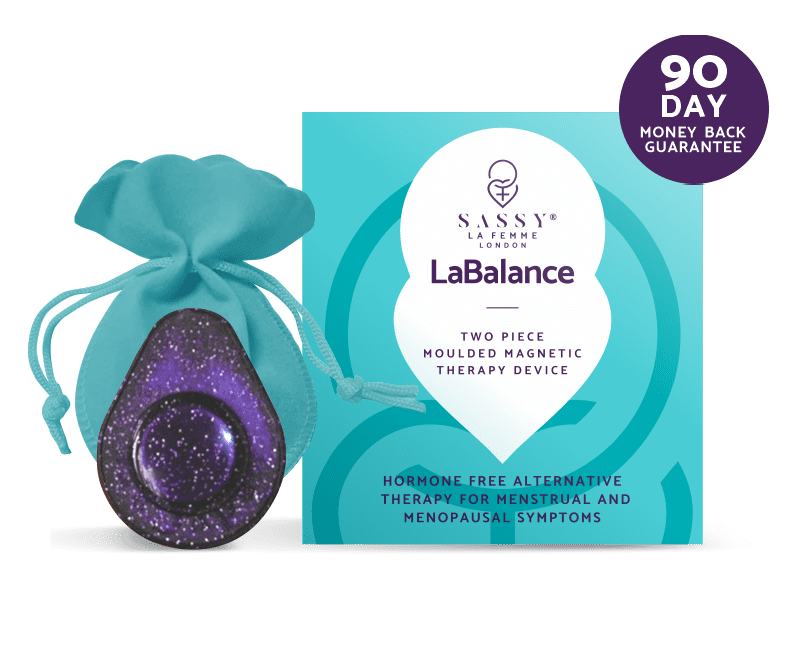Period Woes?
Find out why more women across the UK are turning to LaBalance to help them lead their best lives – and order yours online today!

Find out why more women across the UK are turning to LaBalance to help them lead their best lives – and order yours online today!

Menstruation, or more commonly called ‘a period’, is when a woman bleeds from her vagina. Bleeding starts during the transition known as puberty and lasts usually for 3-8 days. It will continue to happen every 28 days or so until the time in later life when periods will stop.
This second transition is called the menopause.


Period’s are a girls’ natural transition out of childhood and into adolescence. It happens at puberty when a girl’s body becomes able to have a baby. And it
usually happens between the ages of 12-14, but can start as early as 8 or 9 or much later.
This is the time when children experience physical and hormonal changes which will mark the transition
from childhood towards adulthood.
There are many common changes happening at puberty and every girl goes through it. The most common signs of puberty for girls are growth spurts, breasts start to develop and becoming ‘curvier’. Also hair starts to grow under the arms and in the pubic area.
Around the ages of 14-18, when growth spurts stop puberty ends. Normally about 5-6 years after it starts, but it can start and stop earlier or later.


Periods are part of your monthly menstrual cycle, as the body prepares for the possibility of becoming pregnant.
Every cycle one of your two ovaries releases an egg which travels down the fallopian tube and into your womb.
Your womb lining thickens so if the egg is fertilized by sperm and you become pregnant, it will be able to grow in the womb lining.
When the egg isn’t fertilized, the lining of the womb breaks down and passes out through your vagina as blood. This is your period.
For some women periods come and go with no noticeable side effects apart from the natural monthly bleed.
But for many women the changes in the body’s hormone levels before a period can cause noticeable physical and emotional changes. These changes can last for a day or up to two weeks before the period starts. PMS symptoms may be mild and hardly noticeable, or more severe and disruptive to monthly wellbeing.
Common PMS symptoms experienced are outlined below and may go away once menstruation has started:
● Abdominal cramps
● Acne – Spotty skin
● Breast pain or tenderness
● Depression
● Feeling bloated
● Feeling irritable
● Feeling tired
● Food cravings
● Greasy hair
● Headaches/migraines
● Increase in appetite/excess hunger
● Joint and muscle aches and pains
● Mood swings
● Nausea
● Reduced libido (interest in sex)
● Social withdrawal
● Tension or anxiety
● Weight gain
There are a number of potential reasons if your periods stop altogether. You may be very underweight which can alter your monthly cycle.
Pregnancy will (normally) stop your periods and you can confirm this with an over-the-counter pregnancy test. Or, depending on your age, this may indicate you are entering your menopause.
As with any changes to your wellbeing, if you are concerned for any reason, you should consult your GP or other healthcare professional.
If you’re looking for a non-medical alternative for period discomforts and have any queries about trying LaBalance, please don’t hesitate to contact our team online today. LaBalance could be the answer to your wellbeing and a happier you. Checkout our 90 day no quibble money back guarantee, so you’ve nothing to lose.
| Cookie | Duration | Description |
|---|---|---|
| cookielawinfo-checkbox-analytics | 11 months | This cookie is set by GDPR Cookie Consent plugin. The cookie is used to store the user consent for the cookies in the category "Analytics". |
| cookielawinfo-checkbox-functional | 11 months | The cookie is set by GDPR cookie consent to record the user consent for the cookies in the category "Functional". |
| cookielawinfo-checkbox-necessary | 11 months | This cookie is set by GDPR Cookie Consent plugin. The cookies is used to store the user consent for the cookies in the category "Necessary". |
| cookielawinfo-checkbox-others | 11 months | This cookie is set by GDPR Cookie Consent plugin. The cookie is used to store the user consent for the cookies in the category "Other. |
| cookielawinfo-checkbox-performance | 11 months | This cookie is set by GDPR Cookie Consent plugin. The cookie is used to store the user consent for the cookies in the category "Performance". |
| viewed_cookie_policy | 11 months | The cookie is set by the GDPR Cookie Consent plugin and is used to store whether or not user has consented to the use of cookies. It does not store any personal data. |
